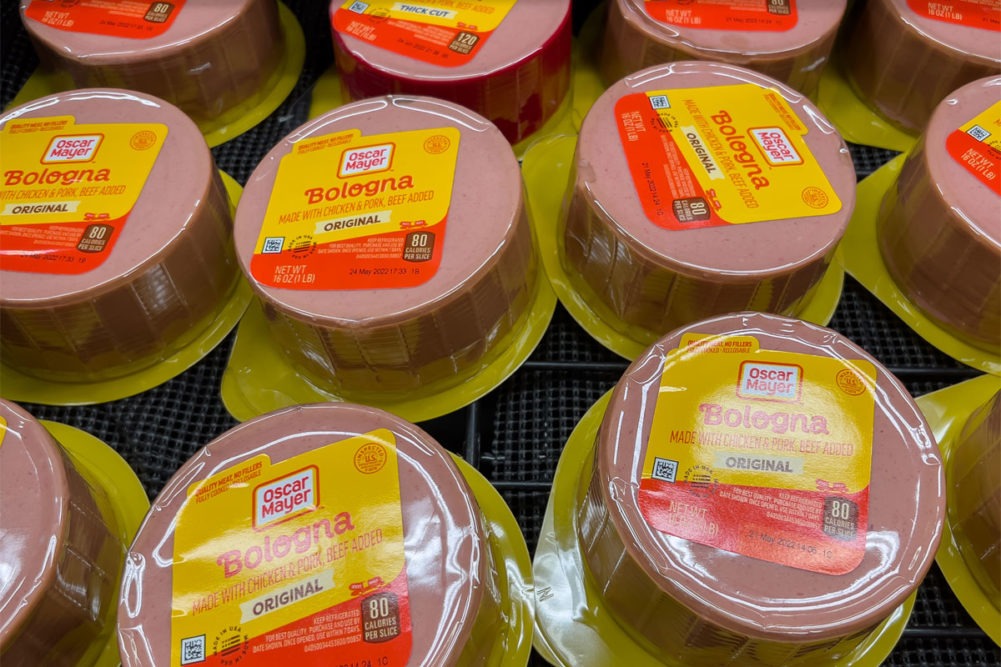PITTSBURGH — Work on improving volume and market share, particularly in its meats business, will continue at Kraft Heinz after net sales in North America slipped 0.4% in the third quarter ended Sept. 30.
Companywide, net income of $262 million, or 21¢ per share on the common stock, was down 42% from $432 million, or 35¢ per share, in the previous year’s third quarter. Higher non-cash impairment losses and higher tax expenses in this year’s third quarter primarily drove the decrease.
Net sales increased 1% to $6.57 billion from $6.51 billion with organic net sales rising 1.7%. Pricing increased by 7.1% in the quarter, but volume/mix declined by 5.4%.
In North America, net sales of $5 billion compared to $5.02 billion in the previous year’s third quarter. Organic sales decreased 0.1%. The meats category had a negative impact of 1.2% on North America organic net sales growth, said Carlos Abrams-Rivera, president of Kraft Heinz, in pre-recorded comments issued Nov. 1.
“As a reminder, the meat category is a part of our energize platform, and we are focused on rebuilding profitability, acting rationally and protecting our adjusted EBITDA dollars,” he said. “This approach continues to work as we generated higher adjusted EBITDA on lower organic net sales in meats in the third quarter.”
Kraft Heinz wants to hit the right price points in cold cuts, which should improve share performance, he said.
“Additionally, we plan to continue to focus on improving service in our value portfolio, where case fill rates are still in the low 80s,” Abrams-Rivera said. “We are expecting improvements by the end of the year.”
In North America, ketchup, mayonnaise, Mexican sauces and frozen potatoes all increased in sales in the quarter, he said. A reduction in the US Department of Agriculture’s Supplemental Nutrition Assistance Program (SNAP) benefits has pressured the company’s share in children’s single-serve beverages.
Kraft Heinz has recovered from low levels in US dollar share experienced earlier this year, Abrams-Rivera said.
“As you recall, we faced expected headwinds after pricing 75% of our portfolio and the reduction of SNAP benefits earlier this year,” he said. “We had planned for elasticities to return to more normal levels, and that’s what we have seen. In July, at a point when volume losses in cold cuts were at their highest, we hit the lowest share levels of the year. Since then, we have improved volumes year-over-year as price gaps have narrowed.”
After interviewing executives, John Oh, an analyst at global research firm Third Bridge, said pricing has improved margins at Kraft Heinz, but it came at the cost of volumes.
“Though the sequential improvement in volumes is encouraging, our experts have previously indicated that it is very important for Kraft Heinz to keep an eye on their pricing relative to the competition, including private label," he said.
In the Kraft Heinz international business, net sales increased 6% to $1.58 billion from $1.49 billion with organic sales up 8%. In emerging markets, organic net sales grew 10%, Abrams-Rivera said.
Companywide, nine-month net income of $2.10 billion, or $1.71 per share on the common stock, was up 42% from $1.47 billion, or $1.20 per share, in the same time of the previous year. Nine-month net sales rose 3.5% to $19.78 billion from $19.10 billion.
In its outlook for the fiscal year, Kraft Heinz expects constant currency adjusted EBITDA growth of 5% to 7%, up from a previous expectation of 4% to 6%, and adjusted EPS in a range of $2.91 to $2.99, up from a previous expectation of $2.83 to $2.91.


